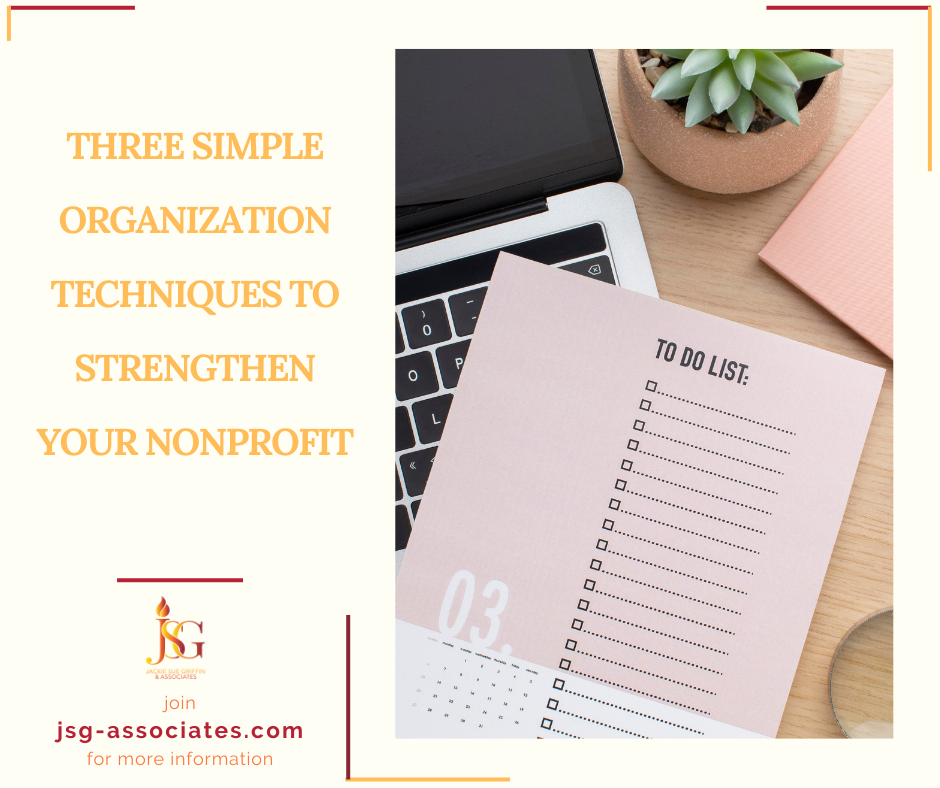
15 Feb Three Simple Organization Techniques to Strengthen Your Nonprofit
Running a nonprofit organization can create a mountain-high list of tasks, from managing fundraising events to coordinating volunteer efforts and communicating with stakeholders. Having simple organization strategies in place is a game-changer for saving time and empowering your entire team to work more effectively. By developing streamlined systems for your daily activities, upcoming events, and even everyday communications, you can create a system that allows you to delegate and collaborate more easily.
Organizing Your Brand Assets:
Your nonprofit’s brand assets, including logos and important documents, are needed for daily use when maintaining consistency and professionalism in your communications. To allow easy access, back up these assets online using cloud storage solutions. Google Workspace, OneDrive, or Dropbox are all examples for storage that can be accessed by your team from any device, whether your team is in the office or working remotely. When your team has access to brand assets online, you ensure everyone has the latest versions and can use them as needed for marketing materials, presentations, and more. This also removes any issues with creating multiple versions of documents as you work offline or losing your work without saving it on your computer.
Planning and Organizing Your Calendar:
Keeping your nonprofit’s activities on track and ensuring that important deadlines and events are not overlooked is almost impossible without a well-organized calendar. Create a shared calendar that includes all significant dates, such as fundraising events, volunteer opportunities, board meetings, and maintenance needs. Write everything down now so nothing takes you by surprise at the last minute. This calendar should be accessible to all team members, allowing everyone to stay informed of all upcoming commitments. By sharing a team calendar, you can remove any scheduling conflicts, allow for coordination, and see that everyone is on the same page when it comes to your organization’s priorities.
Building Your Communication Systems:
The key to the success of any nonprofit organization is effective communication. Start with assigned communication apps and chats to keep everyone informed of their tasks and responsibilities. One chat should never contain all the information that passes between your staff, this can come across as spamming notifications and lead to multiple conversations taking place over top of each other. Try using workplace apps or project management platforms to keep open communication for team members. Set up regular check-ins and meetings to discuss progress, address challenges, and brainstorm ideas. By investing in developing organized communication systems, you create a culture of transparency, accountability, and teamwork for your organization, driving greater efficiency and impact.
Your nonprofit may already use some of these strategies to help streamline your work and simplify communication. Take the opportunity to review what is or isn’t working for your team’s needs. Every nonprofit is different, and changes over time. Are there systems that worked in the past that you’ve outgrown and need to replace? Taking stock of your team’s needs is the most important part of organization to personalize and develop a system that will make work easier and more efficient so you can further your organization’s mission.

No Comments